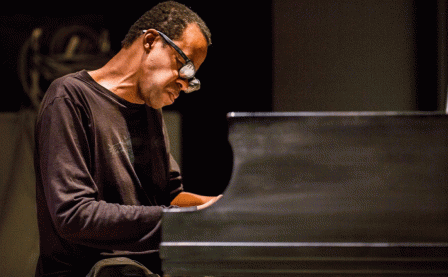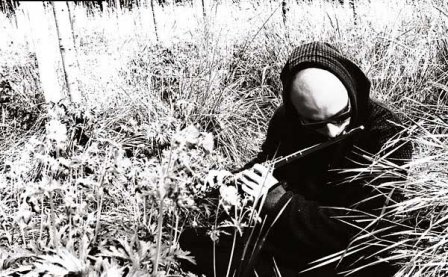Over the past decade, pianist and improvising composer Matthew Shipp has had the good fortune of enjoying a working/curating relationship with the Connecticut indie label Thirsty Ear, and though it’s on a different scale than the artistic and business relationship John Coltrane had with Impulse! Records in the 1960s, there is a quality reminiscent of that in Thirsty Ear’s Blue Series. Shipp has been able to use the label as a sort of sandbox, allowing him to experiment with electronic music and hip-hop as well as “traditional” avant-garde composition and improvisation in primarily small-group contexts. As part of a coterie of musicians — some veteran, some newcomers — around the saxophonist and composer David S. Ware in the early 1990s, Shipp’s work got a lot of notice, though its prescience and historical import weren’t always grasped at the time. The volcanic density of his pianism — on par with Ware’s explosive musical peals — seemed like a realigning of contemporary jazz with Coltrane, Albert Ayler, Cecil Taylor, and the seeds sown in the 1960s. Of course, this is a decidedly incomplete/unfair judgment, but it was how the music was dealt with at that time (and still is to a certain extent).
So it’s important that Shipp’s own work has been documented in a serious way, especially as it has become more complex and developed unique threads and surprising orbits. Art of the Improviser is being released in honor of Shipp’s 50th birthday (December 7, 2010) and presents his work in two vastly different but related contexts across two discs: in a trio with drummer Whit Dickey and bassist Mike Bisio recorded in Troy, New York, and as a solo performance at NYC’s Le Poisson Rouge. The trio set begins with “The New Fact,” a composition first experienced by listeners on Multiplication Table (Hat Hut, 1998), a piece that could serve as a call to arms for contemporary trio-based piano music (à la Jason Moran and Vijay Iyer) and predates the work of those musicians. There’s an extremely anthemic cell structure reminiscent of the fist-pumping early-70s compositions of Mal Waldron; following the theme’s statement, Shipp dives down into rabbit holes, twisting and rendering brushy the right hand’s progressive fragments with Monkish clunks and scumbled eddies as Dickey and Bisio thread a suspended, chattering swing. The piece closes with a lengthy solo bass poem/paean to Jimmy Garrison (the harmonic master who supported Coltrane’s work in the 60s), growing out of repetitive beat-dialogue with the leader and toward throaty, Flamenco-like strums.
“3 in 1” has a stark, singsong melody, and Shipp doesn’t deviate from its glassy sashays, though the rhythm section surges and flails around him, finally erupting into a pot-stewing section for Dickey to stretch out unaccompanied with flecks of loose detail and tensile suspension like Roy Haynes and Sunny Murray. “Circular Temple #1” might, however, be the apex of this trio’s “group-ness,” that even as Shipp’s name might be front and center, the threesome exhale as one organism. This is high-octane chamber improvisation, soft resolutions undercut by the rattle and pluck of ambiguity as Shipp moves into folk themes and arpeggiated runs, outlined by Bisio’s furious pizzicato in a level of interplay that’s both dense and ethereal. As with all of the pieces on this set, it both arises out of the previous tune and segues into the next; though here, in particular, slight rhythmic and thematic references to “Take the A Train” appear in wisps before becoming a clear, albeit chunky, exposition on the Billy Strayhorn theme made popular by the Duke Ellington orchestra. Left-hand curls and thunks juxtaposed with pointillist threads evoke two of the many sides of Ellington’s piano work, and the trio is itself an orchestra that can hear around corners.
Solo Shipp is another story, though a related one. The piano itself is an orchestra — or can be treated as such, anyway — and as much density and complexity as Shipp the pianist is capable of, there’s a certain nakedness that pervades his solo work. That’s not to say it’s exactly devoid of what the trio or quartet might have (aesthetically/beyond the group-concept), but it’s so clearly a working-through of one musician’s relationship to the instrument and exploration of its capabilities that thinking beyond the one-and-one of this relationship would appear superfluous. As in the trio set, the performance is suite-like as compositions and thematic sections appear to bleed into and recall one another. “4D” (from the 2009 Thirsty Ear album of the same name) opens the set, an architectural movement between the poles of lyrical bebop and heavy-handed classicist pillars. Again, the Waldron comparison is apt, although Shipp is a fair shake more ornate. “Fly Me to the Moon” is an oblique reference, with incisive harmonic clamber and rolling, skating clusters giving the tune a dusky, clipped character. “Wholetone” is tremendous, ringing martial minimalism bookending boogie-woogie motion for a theme, as the ensuing improvisation harps on small, distant middle- to upper-register fragments and lithe, gestural appendages, while “Module” is a more minimalist sketch with thematic similarity to Anthony Davis’ “Wayang” series of spare dance-inspired explorations. Even as Shipp fills those spaces and moves around within them, he maintains the delicate character of the composition’s structure.
Art of the Improviser is a testament not only to the improviser’s art, but also to solo and group composition, both in the immediate and overarching sense. At 50, Matthew Shipp is playing some of the most refined, deliberate music in the contemporary sphere.
More about: Matthew Shipp




